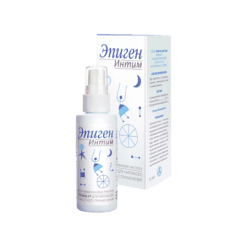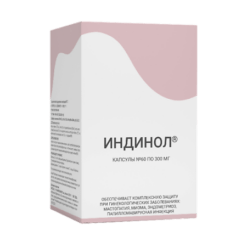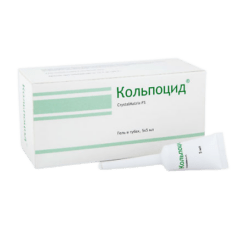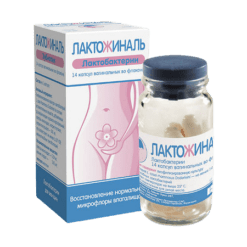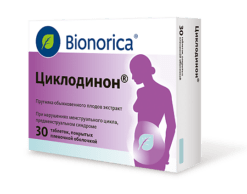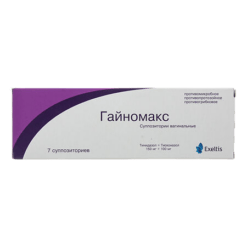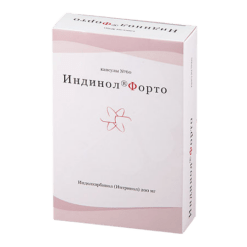No products in the cart.
Anabella, 3 mg+0.03 mg 84 pcs
€1.00
Out of stock
(E-mail when Stock is available)
EAN: 3582910090779
SKU: 321278
Categories: Contraceptive, Gynecology and Obstetrics, Hormonal, Medicine
Description
Anabella® is a low-dose monophasic combined oral contraceptive (OC) containing ethinylestradiol and drospirenone (progestagen).
The contraceptive effect of Anabella® is based on interaction of various factors, the most important of which are suppression of ovulation and increase in viscosity of cervical mucus that makes it difficult for sperm to enter the uterine cavity.
In therapeutic doses drospirenone has moderate anti-mineralcorticoid properties: it prevents weight gain and the appearance of edema associated with fluid retention caused by estrogen. Also drospirenone has anti-androgenic activity: it helps to reduce the symptoms of acne (acne), oily skin and hair. This effect of drospirenone is similar to the effect of natural progesterone produced by the female body. This property should be considered when choosing a contraceptive, especially for women with hormone-dependent fluid retention, as well as women with acne and seborrhea. When used correctly, the Perl index (a measure of the number of pregnancies in 100 women using the contraceptive in a year) is less than 1. If the pill is missed or used incorrectly, the Perl Index may increase.
Women taking OCs have a more regular menstrual cycle, painful menstruation is less frequent, the intensity and duration of bleeding are reduced, which reduces the risk of anemia. In combination with ethinylestradiol drospirenone has a favorable effect on the lipid profile, characterized by an increase in plasma concentration of high density lipoproteins (HDL).
Indications
Indications
Active ingredient
Active ingredient
Composition
Composition
Each tablet contains:
The active ingredients: drospirenone – 3 mg, ethinylestradiol – 0.03 mg.
Auxiliary substances
Core: lactose monohydrate – 70.17 mg, hyprolose – 1.6 mg, potassium polacrylin – 1.6 mg, sodium lauryl sulfate – 3.2 mg, magnesium stearate – 0.4 mg;
film coating: Opadray II Yellow 85F32771 (macrogol 3350 – 20.2%, titanium dioxide – 23.7%, polyvinyl alcohol – 40.0%, talc – 14.8%, iron oxide yellow dye – 1.3%) – 2.0 mg.
7 white film-coated tablets (placebo)
Each tablet contains:
The active ingredients: do not contain.
Auxiliary substances
Core: lactose monohydrate – 73.4 mg, potassium polacrylin – 1.6 mg, povidone-K30 – 4.00 mg, colloidal silicon dioxide – 0.2 mg, magnesium stearate – 0.80 mg;
film coating: Opadray II white 85F18422 (macrogol 3350 – 40.0%. titanium dioxide – 25.0%, polyvinyl alcohol – 20.2%, talc – 14.8%) – 2.0 mg.
Interaction
Interaction
Directions for use
Directions for use
Anabella is to be taken orally daily for 28 days at approximately the same time without interruption, with a small amount of water, in the order shown on the blister pack. The pills in the new pack begin the day after the last tablet from the previous pack is taken. Bleeding “cancellation” usually begins 2-3 days after starting the inactive pills (last row of the blister pack) and may not end before the pills from the next pack are taken.
How to take Anabella®
In the absence of taking any hormonal contraceptives in the previous month
Anabella® starts on the first day of the menstrual cycle (i.e. the first day of menstrual bleeding). It is allowed to start taking the drug on days 2-5 of menstrual cycle, but in this case it is recommended to use an additional barrier method of contraception during the first 7 days of taking the pills.
When switching from other combined contraceptive drugs (OCs, vaginal ring, or contraceptive patch)
Prefer to start taking the pills on the second to fifth days of the menstrual cycle. It is preferable to start Anabella® the day after taking the last active pill from the previous package, but in no case later than the day after the end of a 7-day break (for products containing 21 pills in a package) or after taking the last inactive pill (for products containing 28 pills in a package). Anabella® should be started on the day the vaginal ring or contraceptive patch is removed, but no later than the day a new ring or patch is to be inserted.
When switching from contraceptives containing only progestagens (“mini-pills,” injectable forms, an implant, or a gestagen-releasing intrauterine therapeutic system)
. A woman may switch from the “mini-pill” to Anabella® on any day (without a break), from the implant or gestagen-releasing intrauterine therapeutic system on the day of removal, from the injectable contraceptive on the day when the next injection is due. In all cases, an additional barrier method of contraception should be used during the first 7 days of taking the pills.
After a first trimester abortion
The woman may begin taking Anabella® from the first day after the abortion. If this condition is met, the woman does not need any additional contraceptive measures.
After delivery (if no breastfeeding) or second trimester termination of pregnancy
The start of Anabella® is recommended on days 21-28 after delivery (if no breastfeeding) or second trimester termination of pregnancy. If it is started later, it is necessary to use an additional barrier method of contraception during the first 7 days of taking the pills. If sexual intercourse has already occurred before the start of Anabella® , in this case, pregnancy should be excluded or the first menstrual period should be waited.
Missing pills
Missing inactive pills can be ignored. However, you should throw them away so that you don’t accidentally prolong the period of inactive pills. The following recommendations apply only to skipping active pills (rows 1-3 of the blister pack):
If the delay in taking the pills is less than 12 hours, contraceptive protection is not reduced. The woman should take the missed pill as soon as possible, and subsequent pills should be taken at the usual time;
If the pills are more than 12 hours late, contraceptive protection may be reduced. The more pills you miss, and the closer you miss pills to the inactive pill phase, the more likely you are to get pregnant.
The following basic rules can guide you in this process:
– taking the drug should never be interrupted for more than 7 days;
– 7 days of continuous active pills are required to achieve adequate suppression of the hypothalamic-pituitary-ovarian system.
Hence, if there is a delay of more than 12 hours in taking the active pills (the interval since the last pill is more than 36 hours), the following can be recommended:
The first week of taking the drug
The woman should take the last missed pill as soon as she remembers it, even if that means taking two pills at once. She continues to take the subsequent pills at the usual time. In addition, an additional barrier method of contraception (e.g., a condom) should be used for the next 7 days. If sexual intercourse took place in the 7 days before missing the pill, the possibility of pregnancy should be considered. The more pills you miss, and the closer it is to the inactive pill phase, the greater the risk of pregnancy.
The second week of taking the drug
The woman should take the last missed pill as soon as she remembers it, even if that means taking two pills at once. The next pills should be taken at the usual time. Provided that the woman has taken the pills correctly in the 7 days preceding the first missed pill, there is no need to use additional contraceptive measures. Otherwise, and if two or more pills are missed, additional barrier methods of contraception (e.g., a condom) should be used for 7 days.
The third week of taking the drug
The risk of decreased contraceptive reliability is inevitable because of the approaching inactive pill phase. If a woman has taken the drug correctly in the 7 days preceding the first missed pill, there is no need to use additional contraceptive methods. Otherwise, she needs to use the first of the following regimens and additionally use a barrier method of contraception (such as a condom) for 7 days.
Option 1:
The woman should take the last missed pill as soon as she remembers it, even if that means taking two pills at once. The next pills are taken at the usual time until the active pills in the package run out. The seven inactive pills should be discarded and the pills from the next pack should be started immediately. It is likely that there will be no “cancellation” bleeding until the active pills in the second pack are finished, but “smeary” discharge and “breakthrough” bleeding may occur while taking the pills.
Option 2:
The woman can also stop taking the pills from the beginning of the pack. Then she should take a break of no more than 7 days (or take the inactive pills from the bottom row of the blister pack), including the days she missed the pills, and start taking the medication from the new pack. If a woman skipped active pills and subsequently did not experience bleeding “cancellation” during a break in the medication or while taking inactive pills, pregnancy must be ruled out.
Recommendations for gastrointestinal disorders
In severe gastrointestinal disorders (e.g., vomiting, diarrhea), absorption of the drug may be incomplete, so additional contraceptive measures should be taken.
If vomiting occurs within 3-4 hours of taking the active tablet, a new active (replacement) tablet should be taken as soon as possible. If possible, the next tablet should be taken no later than 12 hours after the normal pill intake. If more than 12 hours have elapsed, it is advisable to follow the recommendations for taking the missed pills. If a woman does not want to change her usual regimen and postpone the start of menstrual bleeding to another day of the week, the extra active pill should be taken from a different package.
Delaying the start day of bleeding “cancellation”
In order to delay the start of menstrual-like bleeding, you must continue taking pills from the new Anabella® package without taking inactive pills. The delay can be prolonged until the pills from the second pack are finished. During taking the drug from the second package, “smeary” bloody discharge from the vagina or “breakthrough” bleeding are possible. Resumption of Anabella® from the next package should be done after the usual intake of inactive pills.
In order to reschedule menstrual bleeding to a different day of the week, a woman should shorten her inactive pills by as many days as she wants. The shorter the interval, the greater the risk that she won’t have “cancellation” bleeding, and will then have “smeary” discharge and “breakthrough” bleeding while taking the subsequent pack (just like when she would like to delay the start of her menstrual-like bleeding).
Particular categories of patients
Children and adolescents
The use of Anabella® is indicated only after the onset of menarche. The data available suggest no dose adjustment for this age group.
Patients in the elderly
Anabella® is not indicated after the onset of menopause.
Patients with impaired liver function
Anabella® is contraindicated in women with severe liver disease until liver function returns to normal (see Contraindications and Pharmacological properties).
Patients with impaired renal function
Anabella® is contraindicated in women with severe renal impairment or acute renal failure (see Contraindications and Pharmacological properties).
Special Instructions
Special Instructions
If any of the conditions/risk factors listed below are present, the possible risks and expected benefits of OC use should be carefully weighed on an individual basis and discussed with the patient before starting Anabella®. If any of these diseases/circumstances/risk factors worsen or occur for the first time, the woman should consult her physician, who may decide whether to discontinue the product.
The results of epidemiologic studies indicate a relationship between OC use and increased incidence of venous and arterial thrombosis and thromboembolism (such as DVT, TELA, myocardial infarction, and cerebrovascular events). These diseases are rare.
The risk of VTE is highest in the first year of OC use. An increased risk is present after initial use of the drugs or renewed use of the same or different OCs (after a break of 4 weeks or more between doses), predominantly during the first 3 months.
The overall risk of VTE in patients taking low-dose OCs (< 50 mcg ethinylestradiol) is two to three times higher than in nonpregnant patients not taking OCs, yet the risk remains lower compared with the risk of VTE in pregnancy and childbirth. VTE can be life-threatening or fatal (in 1 to 2% of cases).
Some data show that drugs containing drospirenone have a higher risk of thromboembolic complications compared to those containing levonorgestrel, norgestimate, or norethindrone.
VTE, manifesting as DVT or TELA, can occur with any OC.
It is extremely rare for thrombosis of other blood vessels, such as hepatic, mesenteric, renal, cerebral veins and arteries, or retinal vessels, to occur with OC use. There is no consensus on the association between the occurrence of these events and the use of OCs.
The symptoms of DVT include unilateral swelling of the lower extremity or along the vein, pain or discomfort in the limb only when upright or walking, localized fever in the affected limb, and redness or discoloration of the skin.
The symptoms of TELA include difficulty or rapid breathing, sudden cough, including coughing with hemoptysis, sharp chest pain that may increase with deep breaths, anxiety, severe dizziness, and rapid or irregular heartbeat. Some of these symptoms (e.g., shortness of breath, coughing) are nonspecific and may be misinterpreted as signs of other more or less severe conditions (e.g., respiratory tract infection).
The ATE can lead to stroke, vascular occlusion, or myocardial infarction. Symptoms of stroke include sudden weakness or loss of sensation in the face, upper and lower extremities, especially on one side of the body, sudden confusion, speech disorders or aphasia; sudden unilateral or bilateral loss of vision, diplopia; sudden gait disturbance, dizziness, loss of balance or coordination of movements; sudden, severe or prolonged headache for no apparent reason; loss of consciousness or fainting with or without epileptic seizure.
Other signs of vascular occlusion include sudden pain, swelling and mild bruising of the extremities, and “acute abdominal” symptoms.
The symptoms of myocardial infarction include pain, discomfort, pressure, heaviness, compression or tumescence in the chest or behind the sternum; pain radiating to the back, jaw, throat, arm, stomach; cold sweat, nausea, vomiting or dizziness, severe weakness, anxiety or shortness of breath; rapid or irregular heartbeat.
The ATE can be life-threatening or fatal.
In women with a combination of several risk factors or high severity of one of them, their mutual reinforcement should be considered. In such cases, the cumulative effect of the risk factors present is increased. Anabella® is contraindicated in these cases (see section “Contraindications”).
The risk of thrombosis (venous and/or arterial) and thromboembolism is increased:
– with increasing age;
– in women who smoke (the risk increases with more cigarettes or increasing age, especially in women over 35).
It increases in the presence of:
– obesity (body mass index more than 30 kg/m2);
– dyslipoproteinemia;
– arterial hypertension;
– migraine;
– heart valve disease;
p> – atrial fibrillation;
– family history (e.g., venous or arterial thromboembolism ever in a close relative or parent at a relatively young age). If there is an inherited or acquired predisposition, the woman should be seen by an appropriate specialist to decide whether to use OCs;
– prolonged immobilization, major surgery, any lower extremity surgery or extensive trauma. In these cases, the use of OCs should be discontinued (if surgery is planned, at least 4 weeks before) and not resumed for another 2 weeks after the woman has regained full mobility. If necessary, the use of barrier methods of contraception is recommended. Temporary immobilization (e.g., air travel longer than 4 hours) may also be a risk factor for VTE, especially in the presence of other risk factors.
The possible role of varicose veins and superficial thrombophlebitis in VTE remains controversial.
Peripheral circulatory disorders can also be seen in diabetes mellitus, systemic lupus erythematosus, hemolytic-uremic syndrome, chronic inflammatory bowel disease (Crohn’s disease or ulcerative colitis) and sickle cell anemia. An increase in the frequency and severity of migraine attacks during the use of OCs (which may precede cerebrovascular disorders) may be grounds for immediate discontinuation of these drugs.
The biochemical indicators indicating an inherited or acquired predisposition to venous or arterial thrombosis include the following: activated C-protein resistance, hyperhomocysteinemia, antithrombin III deficiency, C-protein deficiency, S-protein deficiency, antiphospholipid antibodies (anticardiolipin antibodies, lupus anticoagulant). When assessing the risk-benefit ratio, it should be taken into account that adequate treatment of the condition may reduce the associated risk of thrombosis. Also consider that the risk of thrombosis and thromboembolism in pregnancy is higher than with low-dose OCs (< 50 mcg ethinylestradiol).
Tumors
The most significant risk factor for cervical cancer is persistent papillomavirus infection. There have been reports of some increased risk of cervical cancer with long-term use of OCs. The association with OC use has not been proven. There remains controversy about the extent to which these findings are related to screening for cervical abnormalities or to patterns of sexual behavior (less frequent use of barrier methods of contraception).
There is also evidence for a reduced risk of endometrial and ovarian cancer when taking OCs. A meta-analysis of 54 epidemiologic studies showed that there is a slightly increased relative risk of breast cancer diagnosed in women currently taking OC (relative risk 1.24). The increased risk gradually disappears over a period of 10 years after stopping these drugs. Because breast cancer is rare in women younger than 40 years of age, the increase in breast cancer diagnoses in women currently or recently taking OC is small relative to the overall risk of the disease. The increased risk observed may be due to earlier diagnosis of breast cancer in women using the drugs, to their biological effect, or to a combination of both. Women who have used OCs are detected at earlier stages of breast cancer than women who have never used them.
In rare cases there have been cases of benign, and in extremely rare cases, malignant liver tumors developed during the use of OCs, which in some cases have led to life-threatening intra-abdominal bleeding. This should be considered when making a differential diagnosis if severe abdominal pain, liver enlargement, or signs of intra-abdominal bleeding occur. Tumors can be life-threatening or fatal.
Synopsis
Synopsis
Circular, biconvex, film-coated pale yellow tablets.
Placebo tablets: round, biconvex, film-coated white tablets.
Features
Features
Contraindications
Contraindications
The drug Anabella® is contraindicated in the presence of any of the conditions listed below. If any of these conditions/diseases occur for the first time while taking the drug, it should be stopped immediately:
– Thrombosis (venous and arterial) and thromboembolism, current or history (including deep vein thrombosis (DVT), pulmonary embolism (TELA), myocardial infarction, stroke), cerebrovascular disorders (incl.Ñ. history);
– conditions preceding thrombosis (including transient ischemic attacks, angina pectoris) currently or in the past;
– Hereditary or acquired predisposition to develop venous or arterial thrombosis, such as resistance to activated protein C; antithrombin III deficiency; protein C deficiency; protein S deficiency; hyperhomocysteinemia and antiphospholipid antibodies (cardiolipin antibodies, lupus anticoagulant);
– migraine with focal neurologic symptoms currently or in the history;
– multiple or expressed risk factors for venous or arterial thrombosis, including complicated heart valve lesions, atrial fibrillation; obesity (body mass index (BMI) greater than 30 kg/m2); cerebral or coronary artery disease; uncontrolled arterial hypertension; severe dyslipoproteinemia; diabetes with vascular complications; major surgery with prolonged immobilization; extensive trauma; air travel of more than 4 hours smoking over 35 years of age;
Pancreatitis with significant hypertriglyceridemia, current or history – Liver failure, severe liver disease (pending normalization of liver tests);
– Liver tumors (benign or malignant), includingÑ. history;
– severe renal impairment, acute renal failure;
– current or suspected hormone-dependent malignancies of the genital or mammary glands;
– bleeding from the vagina of unclear genesis;
– pregnancy or suspected pregnancy;
– breastfeeding;
– hypersensitivity to any of the ingredients of the drug;
– lactose intolerance, lactase deficiency or glucose-galactose malabsorption.
If patients have any of the conditions/diseases/risk factors listed below, the possible risks and expected benefits of Anabella® should be carefully weighed:
– Risk factors for thrombosis and thromboembolism: smoking; hereditary predisposition to thrombosis (thrombosis, myocardial infarction or stroke at a young age in any immediate family member); overweight (BMI at least 25 and no more than 30 kg/m2); dyslipoproteinemia, controlled arterial hypertension; migraine without focal neurologic symptoms; uncomplicated heart valve defects; other diseases in which peripheral circulation disorders may be noted diabetes mellitus, systemic lupus erythematosus, hemolytic-uremic syndrome, Crohn’s disease and ulcerative colitis, sickle cell anemia, and superficial vein phlebitis;
– hereditary angioedema;
– hypertriglyceridemia;
– liver disease;
– conditions that first occurred or worsened during pregnancy or with previous use of sex hormones (e.g., jaundice, cholestasis, cholelithiasis, otosclerosis with hearing impairment, porphyria. Pregnancy herpes, Sydenham’s chorea);
Postpartum.
Side effects
Side effects
This section presents the different types of adverse reactions according to the classification of organ and organ system lesions in the MedDRA Medical Dictionary for Regulatory Affairs. The frequency of adverse effects was determined according to the World Health Organization (WHO) classification: very common (⥠1/10), common (⥠1/100 and < 1/10), infrequent (⥠1/1000 and < 1/100), rare (⥠1/10000 and < 1/1000) and very rare (< 1/10000), including individual reports. Within each frequency group, adverse reactions are presented in descending order of severity.
Immune system disorders
Rarely: hypersensitivity reactions, bronchial asthma.
Mental disorders
Often: low mood.
Infrequent: increased libido, decreased libido.
Nervous system disorders
Often: headache.
Hearing and labyrinth disorders
Rarely: hypoacusis.
Vascular disorders
Often: migraine.
Infrequent: increase in blood pressure (BP), decreased blood pressure. Rare: venous thromboembolism (VTE), arterial thromboembolism (ATE).
Gastrointestinal disorders
Often: nausea.
Infrequent: vomiting, diarrhea.
Skin and subcutaneous tissue disorders
Infrequent: acne, eczema, skin itching, alopecia.
Rarely: erythema nodosum, erythema multiforme.
Gender and mammary gland disorders
Often: menstrual disorders, acyclic bleeding, mammary gland pain, breast engorgement, vaginal discharge, candidal vulvovaginitis.
Infrequent: enlargement of the mammary glands, vaginitis.
Rarely: discharge from the mammary glands.
General disorders and disorders at the site of administration
Infrequent: fluid retention, weight changes.
Post-registration data
The following serious adverse events have been reported in women taking OCs: VTE, ATE, increased BP, liver neoplasms, and chloasma.
The association with taking OC has not been proven with the occurrence or worsening of the following conditions: Crohn’s disease, ulcerative colitis, epilepsy, uterine myoma, porphyria. systemic lupus erythematosus, pregnancy herpes, Sydingham chorea, hemolytic-uremic syndrome, cholestatic jaundice.
Acute and chronic liver dysfunction may cause withdrawal of Anabella® until liver function parameters return to normal.
The OCs may affect peripheral insulin resistance and glucose tolerance.
In women with hereditary angioedema, exogenous estrogens may cause the manifestation or exacerbation of the disease.
The incidence of breast cancer among women taking OCs is slightly higher than among women not taking the drugs. Because breast cancer is rare in women under the age of 40, this increase is small relative to the overall risk of breast cancer in the population. A causal relationship between breast cancer and taking OCs has not been proven at this time.
Overdose
Overdose
Similarities
Similarities
Additional information
| Shelf life | 2 years. Do not use after the expiration date stated on the package. |
|---|---|
| Conditions of storage | Store at a temperature not exceeding 30 ° C. Store out of the reach of children. |
| Manufacturer | Sindea Pharma S.L., Spain |
| Medication form | pills |
| Brand | Sindea Pharma S.L. |
Other forms…
Related products
Gynecology and Obstetrics
Buy Anabella, 3 mg+0.03 mg 84 pcs with delivery to USA, UK, Europe and over 120 other countries.



